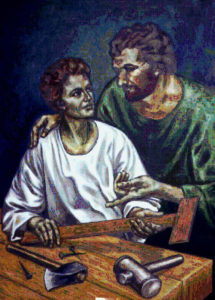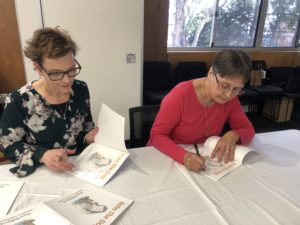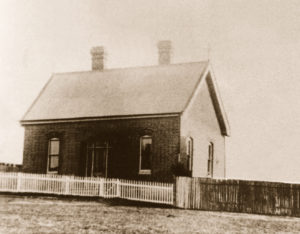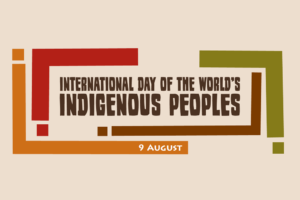National Child Protection Week 2019
September 1, 2019Celebrating the theme that parenting is like navigating waters…

Becoming a parent has been an incredible ride, and nothing prepares you for it, that intense love you feel for the little creature you have created and the patience you have (at times). There are times when it is overwhelming, and when the saying “it takes a village to raise a child” is so very true. Knowing when you need a break or to simply walk away, this takes supreme inner strength – and having the support to do it, is the most empowering thing in the world. But unfortunately, not all parents have the luxury of wisdom and strength to know when to walk away, nor support on hand to be able to get away for their sanity.
In 2014 the New Zealand government introduced the Children’s Act. This act made sweeping changes to how the New Zealand government would protect vulnerable children, and help them to thrive, flourish and belong.
For me, this meant some changes, but it wasn’t just me. I’m a paramedic working on the ambulance front line. These changes affected everyone that comes into contact with children in the health, education, justice sectors and local and central governments. All these people had to be security vetted again. Training on how to identify vulnerable children and how to report such concerns were given.
New Zealand has horrific child abuse and child death rates. There is always something in the news about a child who has been taken to hospital with non-accidental injuries. It makes me so sad, and it makes me think how can one human do this to a defenceless child?
 I have come to find that in an emergency, in the heat of the moment, the focus is on saving a life, and the finer details of what has happened are not shared, or they are withheld willingly.
I have come to find that in an emergency, in the heat of the moment, the focus is on saving a life, and the finer details of what has happened are not shared, or they are withheld willingly.
Thankfully in all my years of prehospital work, I have only been involved in one serious case of inflicted injury on a baby. I wasn’t entirely sure what was going on with this baby at the time, but subconsciously I must have known. During the transport of this wee boy, I felt this overwhelming need to speak to him all the way to hospital, and shower him with love, reassurance and calming words. I was now his advocate, and his protector, and I would deliver him safe to my colleagues at the hospital emergency department so they could do all that they could do to keep him alive.
Thinking about what he had endured helped me find the strength and courage to attend court later when I was called as a witness in the accused’s trial. If this baby could have survived months of hate and abuse at the hands of the perpetrator, I could definitely give a day of my life to speak for him.
I am grateful for the opportunity that we as paramedics have – what I see as a special role. We make up a group of only a few outsiders who get to glimpse into the home when it hasn’t been prepared to be scrutinised. If my colleagues and their observations of a child can save them from abuse or worse, you can count on us.
Rebecca Gilroy
Visit the National Child Protection Week website
Right photo by Asad Photo Maldives obtained from Pexels. Used with permission.
Left photo by andres chaparro obtained from Pexels. Used with permission.
Father’s Day 2019
From a Josephite point of view, there can be no better example of what Father’s Day should encapsulate.
 Here we have the Christian religion’s “father of all fathers” taking care of the “son of all sons”. One assumes that a father is to provide for his wife and family. Regardless of how the modern family unit has been denigrated (if that is not too strong a word), the common belief is that the parent(s) are to take care and nurture the child(ren) of that union. If that is still to be taken as a base fact, then the “Holy Family”, of which Joseph and Jesus were members, provides us with a platform upon which we can base our assumptions of what is now known as Father’s Day.
Here we have the Christian religion’s “father of all fathers” taking care of the “son of all sons”. One assumes that a father is to provide for his wife and family. Regardless of how the modern family unit has been denigrated (if that is not too strong a word), the common belief is that the parent(s) are to take care and nurture the child(ren) of that union. If that is still to be taken as a base fact, then the “Holy Family”, of which Joseph and Jesus were members, provides us with a platform upon which we can base our assumptions of what is now known as Father’s Day.
It is really of no consequence to go into history to try and establish when, what we have today, was first “set in concrete”, suffice to say that while the intention was well meant, (as with Mother’s Day), the extension of that well-meaning has developed into full blown commercialism.
Only every so often in the mindless and endless tirade of advertising catalogues in the snail mail post, the television screens and phones are there any semblance of the “real” meaning of the day. Dad/father is depicted as a loving protector of the children in the catalogues and while the pipe and slippers image has disappeared due to the anti-cancer crusade against smoking, the message is still very clear…spend up big on your dad, give him multiple presents because he deserves it for the role he plays in guiding the family through the maze of difficult situations that confront the modern family. Most honourable!
If we can cast our mind back to Joseph however, I hardly think the “Nazareth Times” would have been running specials of any sort. Any advertising done in any way shape or form would have been by personal example. It was the clearest and most striking way of demonstrating anything. Family values were no exception.
Remembering that there was some degree of confusion and, I dare say, “tittle tattle” surrounding Joseph and his fatherhood status, (“betrothed to a maiden called Mary”) it was absolutely essential that whatever Joseph did, had to be “above board” to all the local townsfolk as that special family came into the town, settled down and began the ordinary process of living as all the other families in the town were doing. Nothing very much seems to be clearly known about the first 12 years of Jesus’ life so that suggests that Joseph must have been doing a very good job at providing for his wife and son. Nothing untoward happened until “the Temple lectures”.
 In their house, Joseph must have been tutoring Jesus in the skills of woodworking, manners, social communications and reverence to their God. Perhaps it was these human qualities that Joseph instilled into Jesus in those early years – with the undeniable help of Mary – that led Jesus to develop an uncanny understanding of human behavioural traits…. which were to cause him so much anguish in his adult life.
In their house, Joseph must have been tutoring Jesus in the skills of woodworking, manners, social communications and reverence to their God. Perhaps it was these human qualities that Joseph instilled into Jesus in those early years – with the undeniable help of Mary – that led Jesus to develop an uncanny understanding of human behavioural traits…. which were to cause him so much anguish in his adult life.
As far as Joseph was concerned, he had discharged his duty as “head of the family” and perhaps the only present he ever got from Jesus (the human Jesus) was a wink and a smile when some client had bought a piece of crafted wood and was pleased with it.
Sometimes a smile says more than any bought gift….Father’s Day.
Laurie Mayne
Photo of Father’s Day image obtained from Pxhere. Used with permission.
Bobs the Dog Book
August 27, 2019‘Bobs the Dog’ is the fruit of much thought and love.

He captured my imagination years ago when I first saw that iconic photo of him with Saint Mary of the Cross MacKillop and her siblings, Donald and Annie. I also love the idea that Mary, who grew up around animals, loved to have a pet dog close by. Having a little dog close by would have kept her grounded.
A short time ago, after writing the story of Bobs, I visited Penola where I met Catherine Sandric who was also visiting with her mother. I was encouraged to ask Catherine if she might illustrate my story of Bobs. Catherine graciously accepted and together we made the story of Bobs come to life.
While this story has been written with children from eight to ten years of age in mind, some adults have found it helpful as they face their grief and loss of a loved one. Bobs is a “clever little dog”, as Donald remarks in the story.
 There were other dogs before Bobs in Mary’s life. There are no photos of them, however a name of a dog has been passed down from Sisters of Saint Joseph who knew Mary. Mary herself when writing to a friend, mentions another of the dogs by name. A couple of Sisters have recorded how they helped to care for pets that lived with them at the Mother House in North Sydney.
There were other dogs before Bobs in Mary’s life. There are no photos of them, however a name of a dog has been passed down from Sisters of Saint Joseph who knew Mary. Mary herself when writing to a friend, mentions another of the dogs by name. A couple of Sisters have recorded how they helped to care for pets that lived with them at the Mother House in North Sydney.
Like many Australians today, our Saint Mary had a soft spot in her heart for animals. I look forward to exploring the lives of some of her other pets. Perhaps, like Bobs, they will reveal how they offered her unconditional love in the ups and downs of her life.
Diane Phillips rsj
Sisters mourn the passing of the Honourable Tim Fischer
August 26, 2019The Sisters of Saint Joseph mourn the passing of the Honourable Tim Fischer’s death after a long battle with cancer.
While he is remembered as a man who made a great contribution to Australian politics as the leader of the National Party and deputy Prime Minister, the sisters particularly express their gratitude to Tim for his contribution to Mary MacKillop’s canonisation in Rome in 2010. The Honourable Tim Fischer was appointed as the first resident ambassador to the Holy See in 2008. Here he provided great support, especially to Sister Anne Derwin, Congregational Leader and to Sister Maria Casey in Rome, on public diplomacy and coordination aspects of the canonisation of Mary MacKillop. He saw so much of the Australian spirit in the life of Saint Mary MacKillop and was proud to be there to welcome the thousands of Australian pilgrims on this occasion. Tim sustained this friendship with the sisters beyond the canonisation experience.
 Tim had a great love for people in rural communities, a love shared by Mary MacKillop. He co-authored with Peter Rees a book titled Outback Heroes: And communities that count.
Tim had a great love for people in rural communities, a love shared by Mary MacKillop. He co-authored with Peter Rees a book titled Outback Heroes: And communities that count.
The sisters express their deepest sympathy to his wife Judy and his sons Harrison and Dominic.
May Tim rest in peace in the arms of the God who birthed him into life, and may he now share in the communion of saints with Saint Mary MacKillop.
Sr Monica Cavanagh
Congregational Leader
Sisters of Saint Joseph
Additional reading below:
World Humanitarian Day 2019
August 19, 2019It can be said that it is an innately human quality to want to help others, to be compassionate and to alleviate the pain or suffering of those in need.
Whether this compassion is manifested in small random acts of kindness or becomes apparent on a much larger scale, humans generally want to help others. I really believe that it is one of our driving forces, and that this is something to be celebrated. As Mary MacKillop once said:

As World Humanitarian Day draws upon us, it is a perfect time to reflect on such compassion, to give thought to those who have bravely sacrificed so much to help those desperately in need, to those who have come together to fight battles that were not their own and, more often than not, come to the aid of complete strangers. It is through these selfless acts of bravery and kindness that people within conflict zones and disaster areas are able to survive their hardships. Women, children and men alike are helped by aid workers who make it their sole mission to provide life-saving support and assistance. Humanitarian workers effectively put themselves in harm’s way, often entering into war torn areas or regions devastated by natural disasters. Essentially their key goal is to restore human dignity. Truly they are real life heroes, and this is awe-inspiring.
World Humanitarian Day was established by the United Nations in 2009 and has been celebrated on 19 August every year since. It recognizes the wonderful work done by foreign aid and medical workers, and honours those who have lost their lives in their humanitarian work. It also stresses the importance of international cooperation on humanitarian issues and that the world should work together for the greater good.
This World Humanitarian Day, perhaps we could all focus on this theme of compassion, with an emphasis on trying to incorporate it into our daily lives. You do not need to enter a conflict zone in order to be a humanitarian. A humanitarian is someone who is concerned with or seeks to promote human rights, essentially someone who cares for the dignity of others. We can all be humanitarians and make a difference by simply helping those around us in times of need and putting others before ourselves. Perhaps we could volunteer our time at a homeless shelter or hospital. We could give our seat on the bus to someone who needs it more or we could simply smile at a stranger on the street. The possibilities of kindness are endless.
If you would like to put your kindness into action, you can visit the Mary MacKillop Today website or call (02) 8912 2777.
Year of Indigenous Languages: Maori and Polish
August 9, 2019The United Nations has declared 2019 as the International Year of Indigenous Languages. To celebrate, for each month this year, you’re invited to view greetings for different languages.
For August, we feature the languages Maori and Polish:
Maori

Nau mai e nga mana reo o te ao.
Na matau nga iwi taketake o Aotearoa
Greetings to all the Indigenous Languages of the World.
From the people of Aotearoa New Zealand.
Polish
Na dzien dzisiejszy i jego bfogos-t’awienstwa zawdzi czam swiatu postawie wdzi cznosci
For today and its blessings, I owe the world an attitude of gratitude.
To find out more on the International Year of Indigenous Languages, visit their website below:
International Year of Indigenous Languages
Photo Maori Painted Warrior by Bernd Hildebrandt obtained from Pixabay. Used with permission.
St Joseph’s Perthville: School, College, House
St Joseph’s Perthville: School, College, House.

This book by Dr Marie Crowley is the long-awaited history of education carried out by the Sisters of Saint Joseph at Perthville. The book begins with an examination of the beginnings of the first small school established in 1872. It then traces the development of St Joseph’s College – a highly respected boarding College for girls who, for the most part, lived in rural New South Wales. The concluding chapters recount the final years of St Joseph’s when it served as St Joseph’s House – the boarding facility for MacKillop College, Bathurst. That facility finally closed its doors at the conclusion of 2017.
This book complements the three published works by Dr Crowley dealing with the history of the Sisters of Saint Joseph at Perthville: Women of The Vale, Except In Obedience and A Priceless Treasure. From the opening paragraph she brings to the history her skill and scholarship, providing a clear background to the many developments and changes that occurred at St Joseph’s over a period of 145 years. The difficulties involved in welding together the three stages of education at Perthville – School, College and House – have been skilfully handled resulting in a coherent, chronological presentation.
Threading together every word and paragraph of this book is the special attention Dr Crowley gives to the Sisters of Saint Joseph. Describing them as the ‘life blood’ of the entire Perthville establishment, she highlights their generosity and fidelity in the face of extreme poverty, their hard work in the School and the boarding College, their expertise in teaching and their spirit of friendship. The spirit in which the Sisters accepted the many changes to the College is sensitively presented throughout the book, as are their efforts to maintain the College and House in the face of overpowering difficulties.
St Joseph’s Perthville: School, College, House will be launched at 11am on Saturday, 21 March 2020 at St Joseph’s Heritage and Conference Centre, Perthville.
Dr Marie Crowley
International Day of the World’s Indigenous Peoples 2019
The United Nations General Assembly adopted a Resolution on ‘Rights of Indigenous Peoples’, proclaiming 2019 as the International Year of Indigenous Languages.
 The International Day of the World’s Indigenous Peoples is observed on August 9 each year to promote and protect the rights of the original inhabitants of any given region. There are an estimated 370 million indigenous people in the world, living across 90 countries. They make up less than 5 per cent of the world’s population, but account for 15 per cent of the poorest. They speak an overwhelming majority of the world’s estimated 7,000 languages and represent 5,000 different cultures.
The International Day of the World’s Indigenous Peoples is observed on August 9 each year to promote and protect the rights of the original inhabitants of any given region. There are an estimated 370 million indigenous people in the world, living across 90 countries. They make up less than 5 per cent of the world’s population, but account for 15 per cent of the poorest. They speak an overwhelming majority of the world’s estimated 7,000 languages and represent 5,000 different cultures.
Celebrate this day and give thanks for the wisdom and spirituality of our indigenous peoples all around the globe!
Visit the ‘International Day of the World’s Indigenous Peoples’ Website
